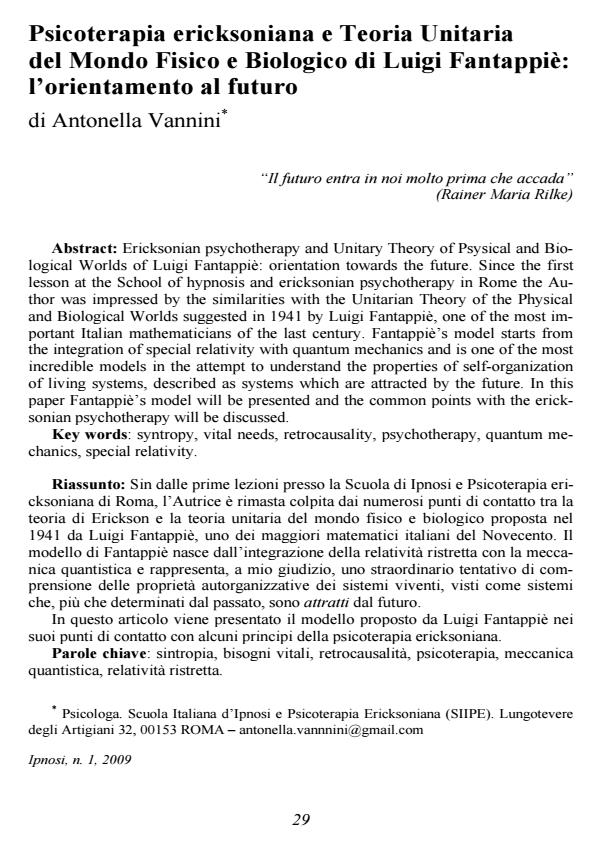Psicoterapia ericksoniana e Teoria Unitaria del Mondo Fisico e Biologico di Luigi Fantappiè: l’orientamento al futuro
Journal title IPNOSI
Author/s Antonella Vannini
Publishing Year 2009 Issue 2009/1
Language Italian Pages 15 P. 29-43 File size 519 KB
DOI 10.3280/IPN2009-001003
DOI is like a bar code for intellectual property: to have more infomation
click here
Below, you can see the article first page
If you want to buy this article in PDF format, you can do it, following the instructions to buy download credits

FrancoAngeli is member of Publishers International Linking Association, Inc (PILA), a not-for-profit association which run the CrossRef service enabling links to and from online scholarly content.
Psicoterapia ericksoniana e Teoria Unitaria del Mondo Fisico e Biologico di Luigi Fantappiè: l’orientamento al futuro - Ericksonian psychotherapy and Unitary Theory of Psysical and Biological Worlds of Luigi Fantappiè: orientation towards the future. Since the first lesson at the School of hypnosis and ericksonian psychotherapy in Rome the Author was impressed by the similarities with the Unitarian Theory of the Physical and Biological Worlds suggested in 1941 by Luigi Fantappiè, one of the most important Italian mathematicians of the last century. Fantappiè’s model starts from the integration of special relativity with quantum mechanics and is one of the most incredible models in the attempt to understand the properties of self-organization of living systems, described as systems which are attracted by the future. In this paper Fantappiè’s model will be presented and the common points with the ericksonian psychotherapy will be discussed.
Key words: syntropy, vital needs, retrocausality, psychotherapy, quantum mechanics, special relativity.
Parole chiave: sintropia, bisogni vitali, retrocausalità, psicoterapia, meccanica quantistica, relatività ristretta.
Antonella Vannini, Psicoterapia ericksoniana e Teoria Unitaria del Mondo Fisico e Biologico di Luigi Fantappiè: l’orientamento al futuro in "IPNOSI" 1/2009, pp 29-43, DOI: 10.3280/IPN2009-001003